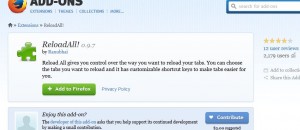While I may not have as many years under my belt as other people, I consider myself to be a moderately experienced and knowledgeable techie. Yes, some people can disagree about my level of knowledge/experience, but I think we can all agree I know enough to be able to dodge some of the crapware that come with software, like third party toolbars.
Recently, FormatFactory – a name that is often appreciated on dotTech – started coming bundled with two third party toolbars, Ask.com and QuickScore toolbars. I know about these toolbars (many FormatFactory fans were quick to inform me about it) so one would think that I would easily dodge their install (i.e. Tell FormatFactory not to install them by unchecking their respective checkboxes). Well ladies and gents, the nature of how these third party software are bundled into installers make it very easy for people to be duped into installing the third party software – I am a perfect example. Yesterday I was (re)installing FormatFactory; I quickly clicked “Next” on all the installer screens totally forgetting the fact that FormatFactory will install Ask.com and QuickScore toolbars unless I tell it not to. Next thing I know, I have two new toolbars sitting in my browsers.
Of course as soon as I realized what I had done, I quickly uninstalled both toolbars (using RevoUninstaller to force uninstall Ask.com toolbar and using QuickScore’s built-in uninstaller to uninstall that one) and even restored my computer to a recent restore point to ensure the toolbars were totally gone. However, my point of this post is not to tell you about my recent experience so you can pity (or praise, depending on what you prefer) me. Rather, it is it highlight the fact that regardless of a person’s level of computer knowledge, these third party software are bundled into installers in a very clever manner; one has to be extremely careful and mindful of installers in order to avoid installing undesired third party software/allowing undesired changes to one’s computer. Of course there is a level of computer knowledge necessary to recognize a third party offer in an installer when they show up, but attentiveness is the key method to protection when it comes to crapware, not technical knowledge.
So, then, what are the takeaways from this (short) case study?
- Be sure to always carefully read all the options presented to you while installing a program. Unfortunately third-party-software-bundles are becoming more and more common (they are a way to generate revenue for developers, hence many freeware developers use them) and even your most trusted program may decide to introduce a third party toolbar/software in its installer. Be careful. Read everything, even if you think it is a legitimate option. The payoffs for the sacrifice of a few minutes of your time spent to carefully monitor an installation are instant… in the form of a crapware-free computer.
- When possible, always download software from Softpedia.com as opposed to other sources. While many other file hosting websites may check for malware in a software, Softpedia (usually) makes sure that software do not come with third party crapware also. That is not to say you shouldn’t be attentive while installing software you downloaded from Softpedia; you should always be very attentive. Rather, that means typically a download from Softpedia won’t include anything like third party toolbars. Take note that a software maybe hosted on Softpedia, the developer’s website, and Download.com, for example; the software that is hosted on Softpedia may be clean of third party bundles, but that does not necessarily mean the download from the developer’s website or Download.com are. Softpedia (usually) specifically makes developer remove third party bundles, so often other sources of download for the same software may include third party bundles while the download from Softpedia does not.
- Update: If a software is listed as “Ad-supported” on Softpedia (under “License”) then it will most likely include third-party software with it. If not, then it is probably clean.
- Download and install some sort of system monitor security software. WinPatrol is one such a system monitor (probably one of the best system monitors). In fact it was WinPatrol that alerted me to the new toolbars being installed on my computer; and I used WinPatrol to block them before I even took any of the removal steps I mentioned earlier in this post. (Note: WinPatrol only blocks/monitors Internet Explorer addons – not the addons for other browsers like Firefox. However, if a new toolbar is installed in Internet Explorer, for example, you can rest assured it will probably have tried to install itself in other browsers, such as Firefox.) To top it off, WinPatrol has a freeware version if you can’t afford the Pro version.
Good luck to everyone and hopefully we can all be vigilant and avoid such problems in the future.

 Email article
Email article



